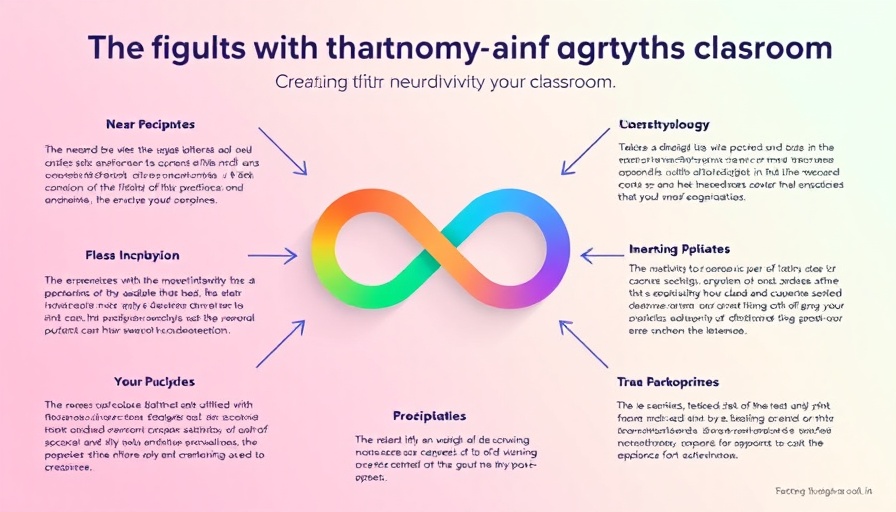
Understanding Neurodiversity: A New Paradigm in Education
The concept of neurodiversity recognizes that neurological differences like ADHD, autism, and dyslexia are inherent variations of the human brain, not deficiencies. This shift in perspective is crucial in establishing a neurodiversity-affirming classroom. Teachers today are encouraged to create environments where all students, regardless of their neurological makeup, can thrive.
The Impact of Embracing Differences on Student Success
Imagine if Dav Pilkey had been nurtured in a setting that recognized his creative potential instead of punishing him for perceived disruptions. By fostering a culture that interprets varied behaviors as unique strengths, educators can steer away from stigmatization. The psychological safety of knowing that their differences are celebrated empowers neurodivergent students, greatly enhancing their engagement and academic success.
Strategies for an Inclusive Classroom Environment
Creating a neurodiversity-affirming classroom involves actionable strategies that can effectively celebrate and integrate diverse learning styles. Here are some key approaches:
- Culturally Relevant Curriculum: Selecting literature that reflects diverse backgrounds allows students to see themselves in their studies. Books that depict various family structures, cultural identities, and neurological differences can open dialogues about acceptance and inclusivity.
- Strength-Based Learning: Incorporating students' interests into lessons can dramatically alter engagement levels. For example, if a student is fascinated by marine biology, use ocean-themed problems in math exercises. Personalizing learning in this way validates their passions and promotes positive relationships with the material.
- Multi-Sensory Teaching Approaches: Using diverse instructional strategies that appeal to various senses can enhance learning outcomes for neurodivergent students. Interactive activities, visual aids, and hands-on projects can cater to different cognitive processes.
Creating a Community of Acceptance
Fostering a classroom community that respects all differences requires a commitment from educators to model acceptance and empathy. Teachers can introduce activities centered around understanding neurodiversity, such as sharing personal experiences, inviting guest speakers, or conducting workshops. This kind of engagement fosters a sense of belonging among students, encouraging them to appreciate not just their uniqueness but also the differences in their peers.
Future Insights: Trends in Neurodiversity Education
As awareness of neurodiversity grows, schools will likely evolve to adopt inclusive policies more steadily. Research indicates that in the next decade, educational systems may prioritize training for teachers on neurodiversity, thereby enhancing overall classroom experiences. Such transformations may also reflect in how educational success is measured, moving beyond standardized tests to more holistic evaluations of student growth.
Conclusion: Take Action Today!
As educators, you have the power to create a neurodiversity-affirming environment. By implementing these strategies, you are not just enhancing learning for neurodivergent students; you're contributing to a more inclusive society. Embrace this journey with your students and celebrate the beautiful spectrum of human thought. Together, let's champion a system of education where every child can flourish!
 Add Row
Add Row  Add
Add 




 Add Row
Add Row  Add
Add 

Write A Comment